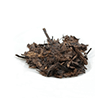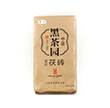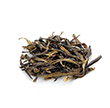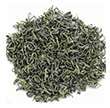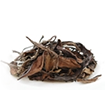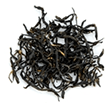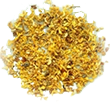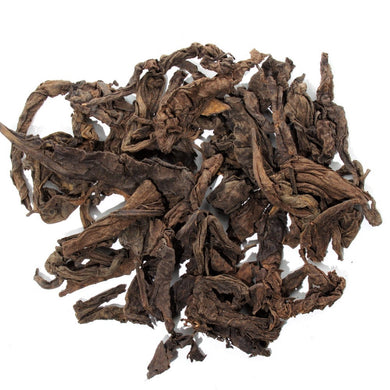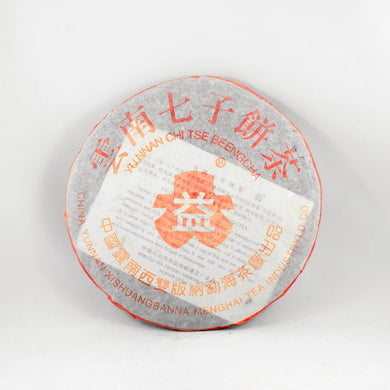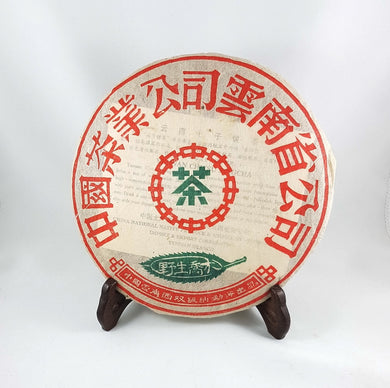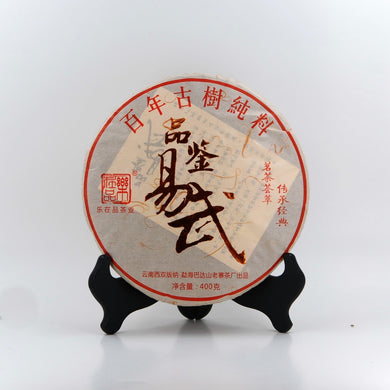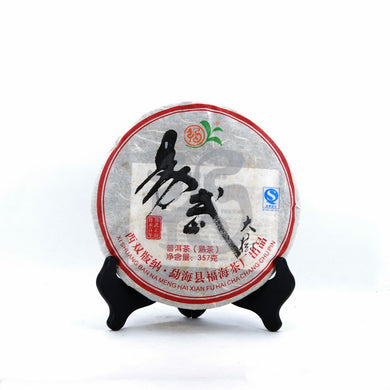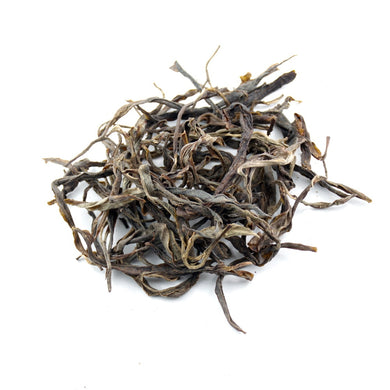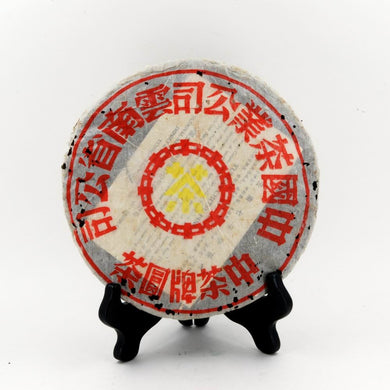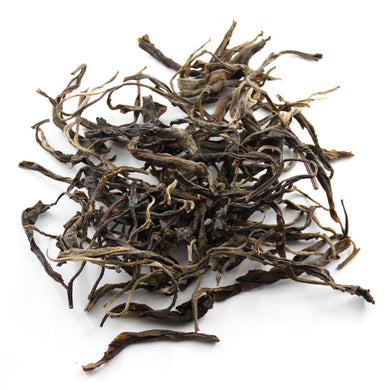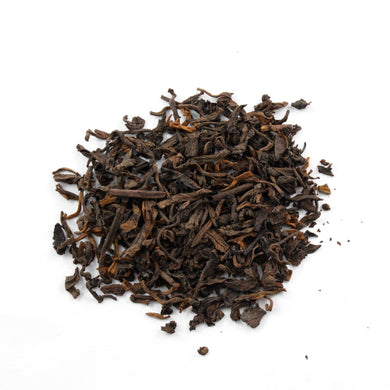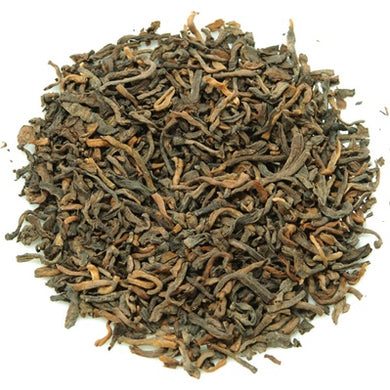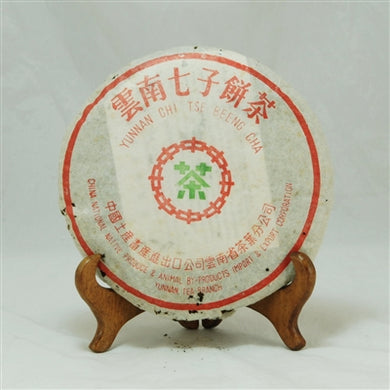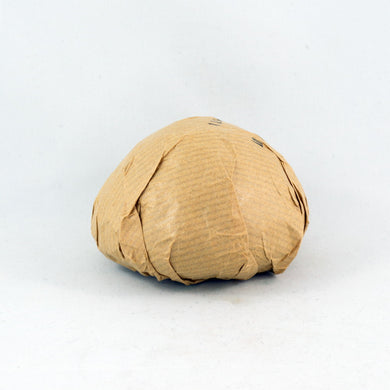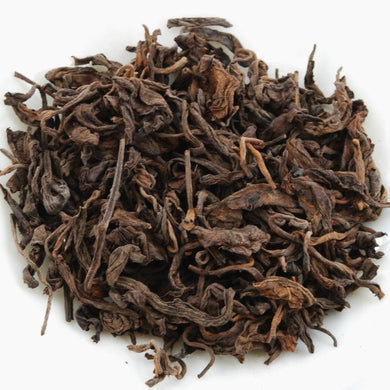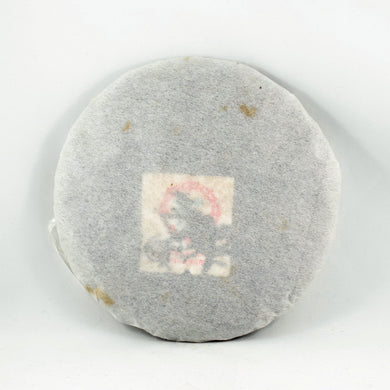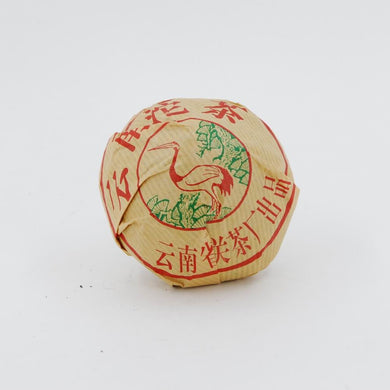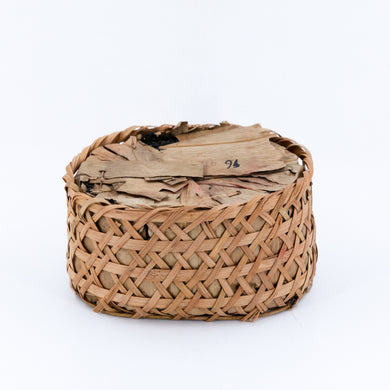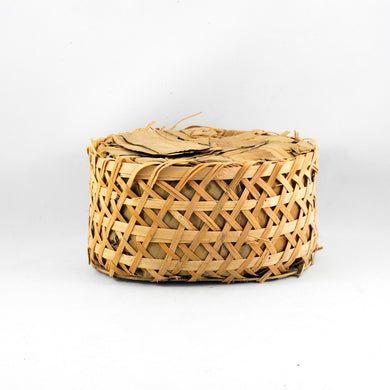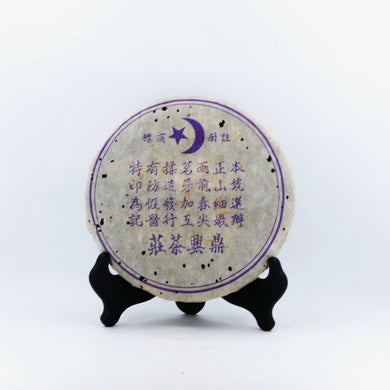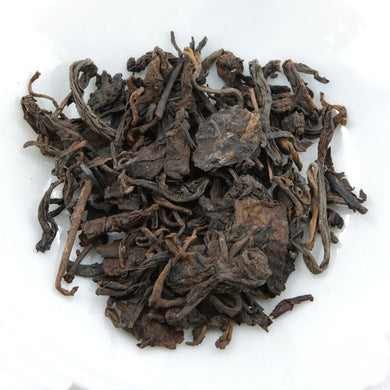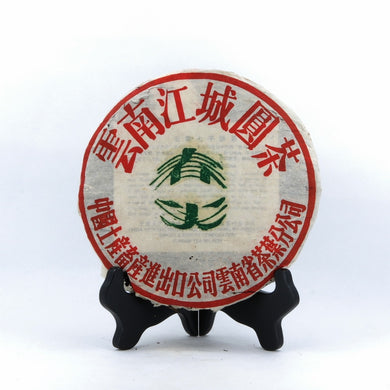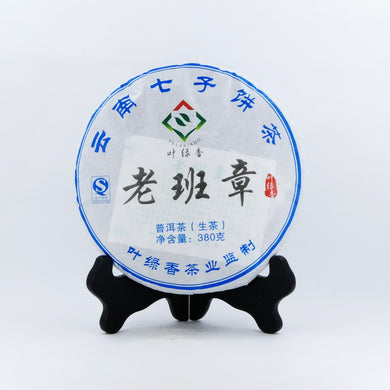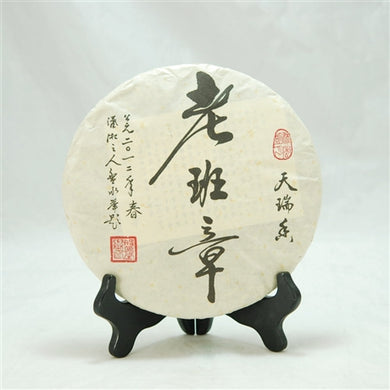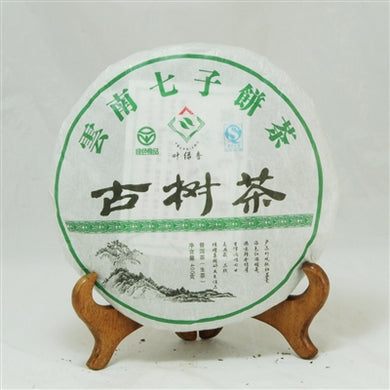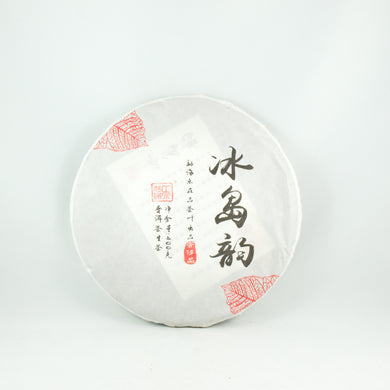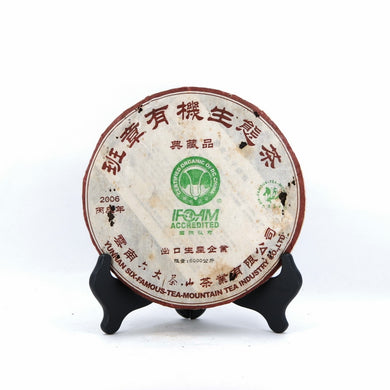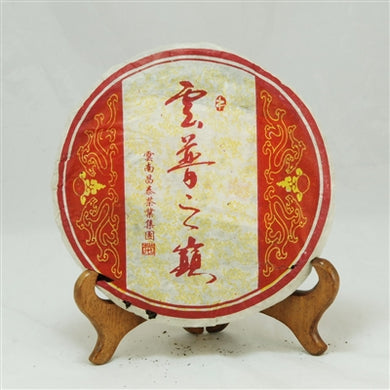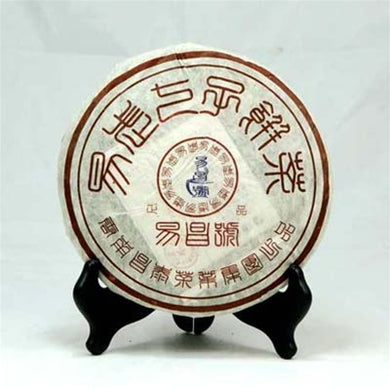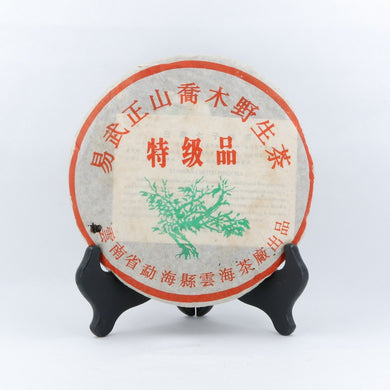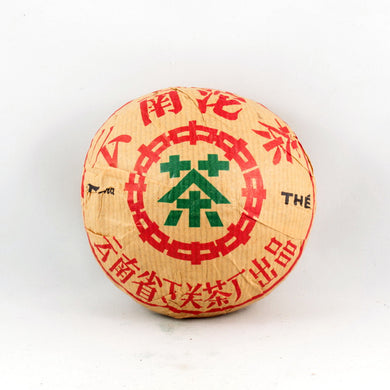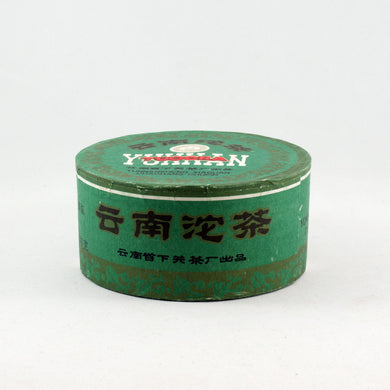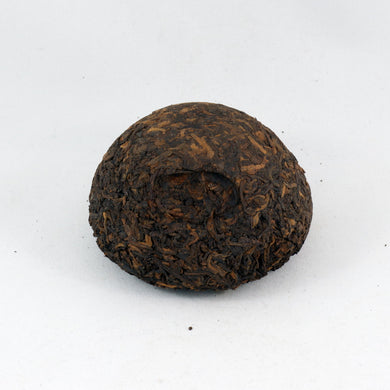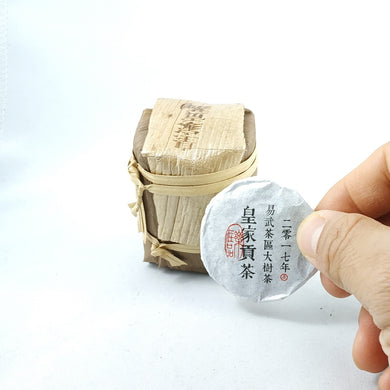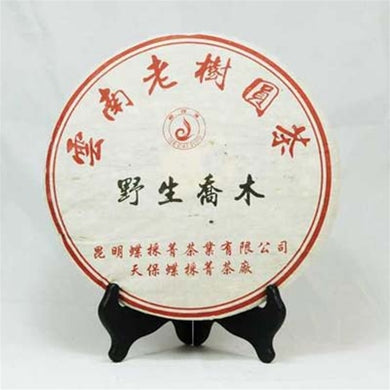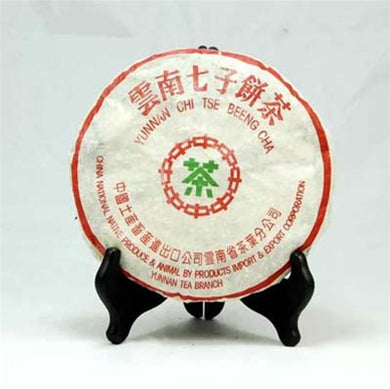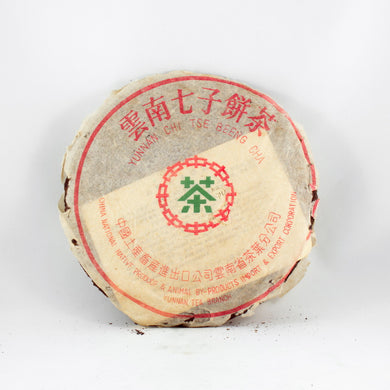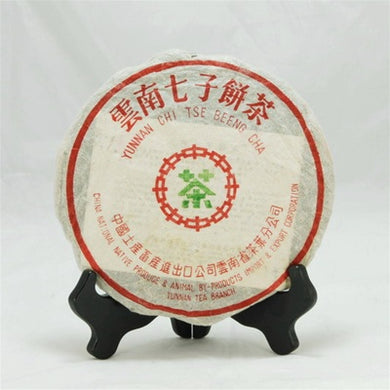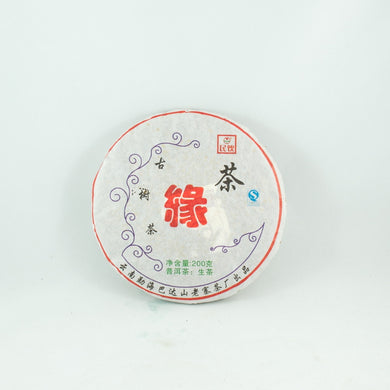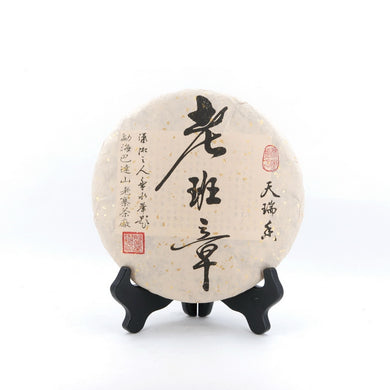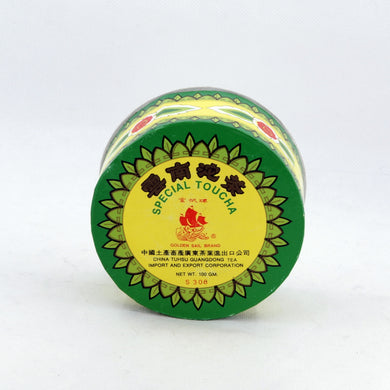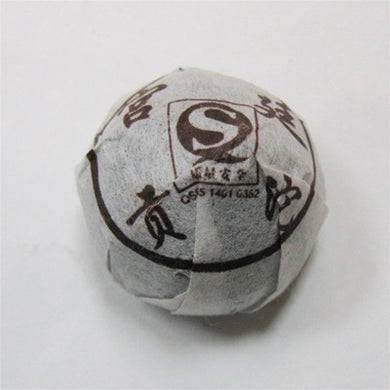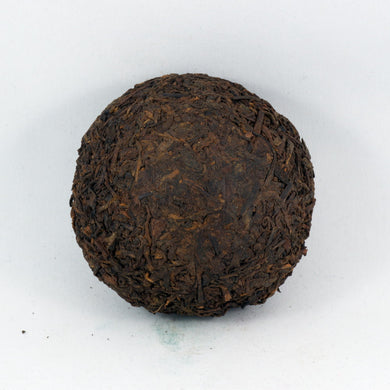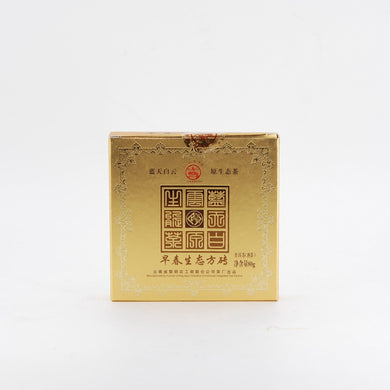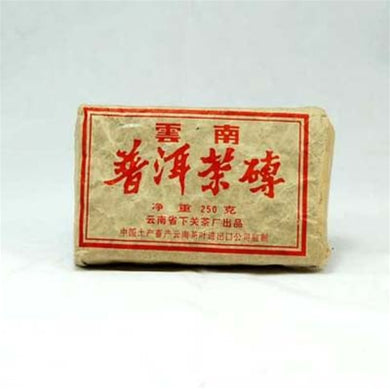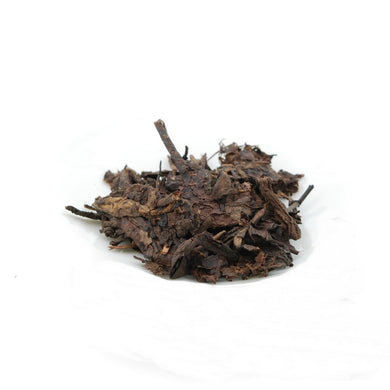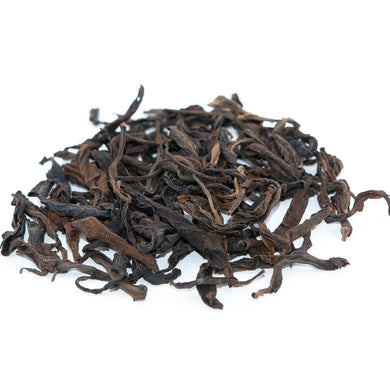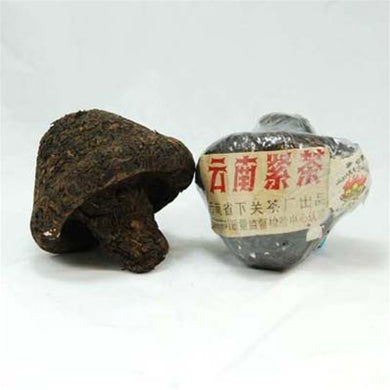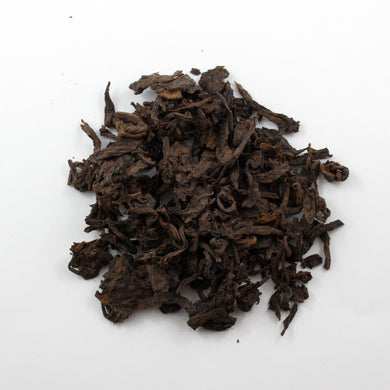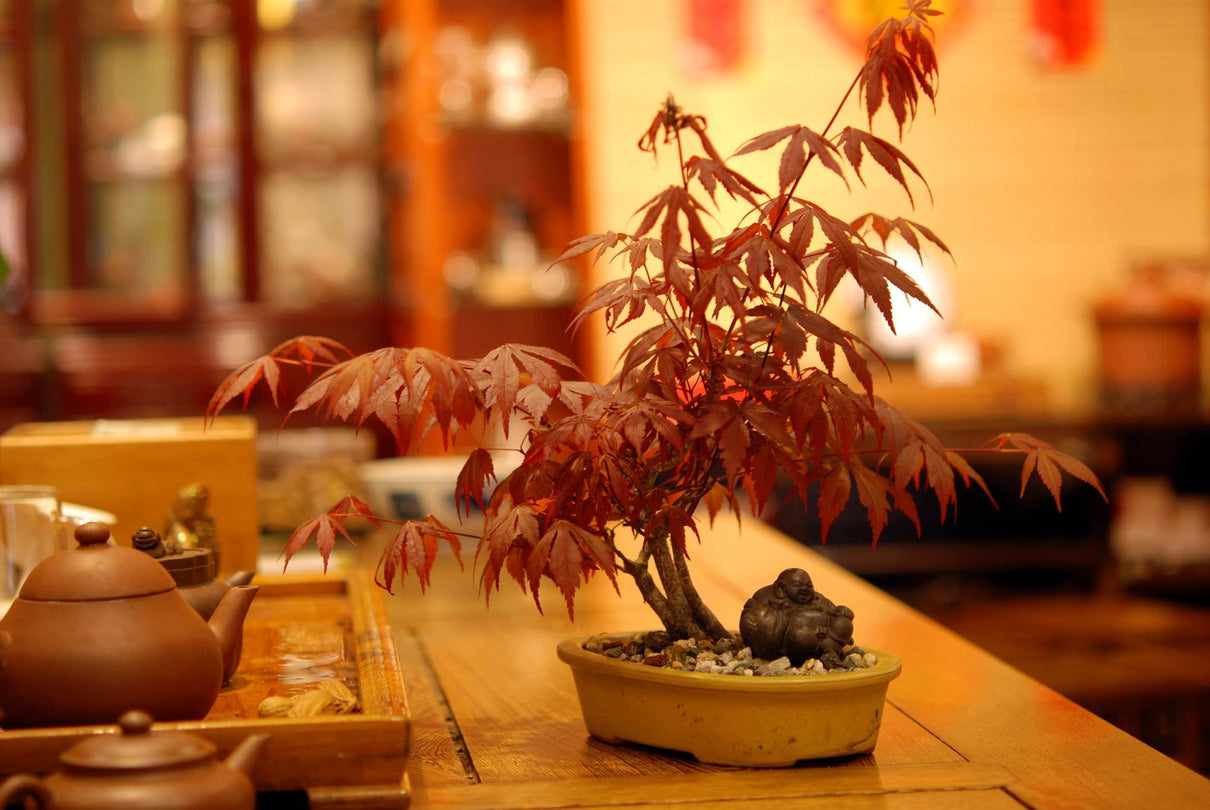1992 Aged Loose Leaf Pu-Erh Tea, Ban Sheng Shu
-100
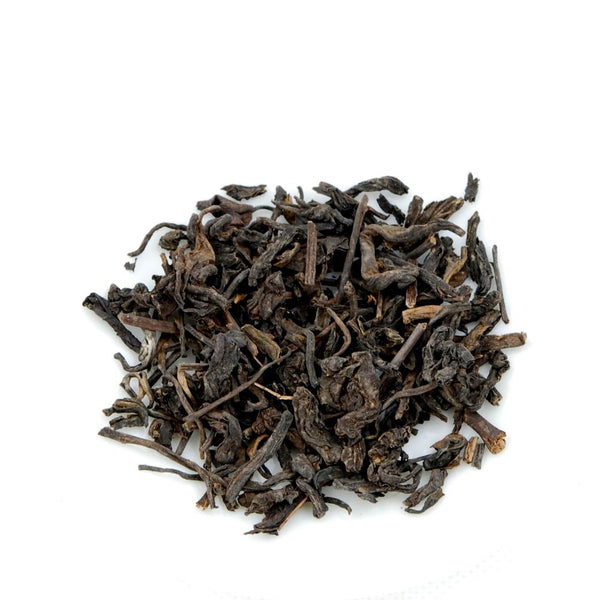
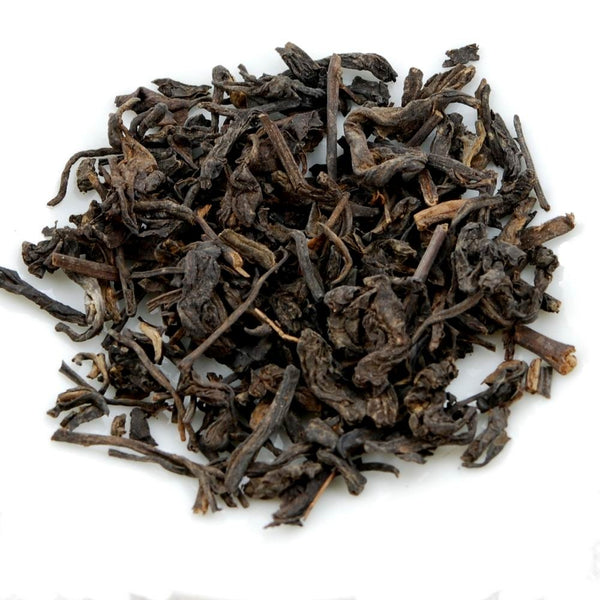
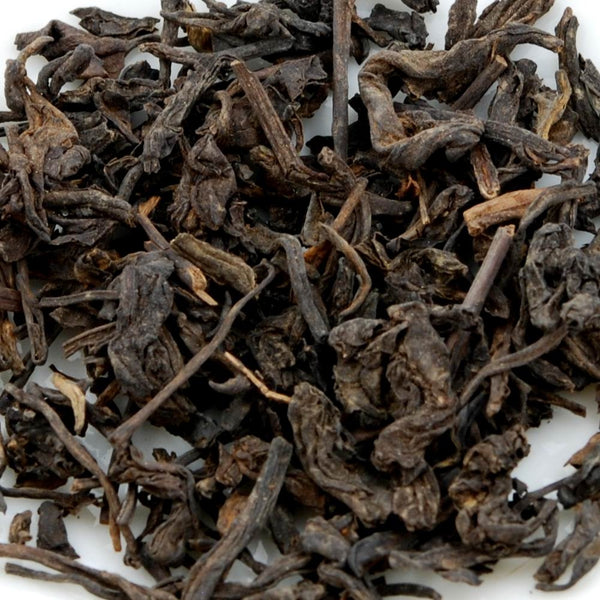
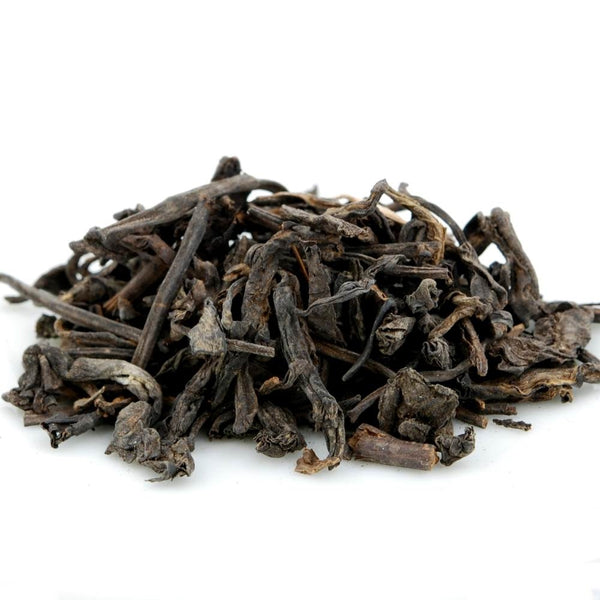
This Pu-Erh tea is another nice big surprise! I have recently found the tea (in 2013) after it has been storing in my warehouse for the past 10 years. This tea was produced in 1992. I bought it from China in 2001 and stored the tea in Vancouver since then. This 20 years old tea has been well kept in Vancouver.
It has developed a very unique aged flovor. When I recently taste this tea with my friends, a word comes come to our mind "Memory". It brings us back to the 1990's in Hong Kong when we used to drink Pu-Erh tea with such a similar aged flavor. In the old days, Hong Kong tea merchants or older style restaurants always formulated their own undisclosed mixing. In order to have a unique flavor and mouth feel, they blend shou and sheng, small leaves and big leaves, or new and aged Pu-Erh teas together with their own secret recipes. And this particular aged Pu-Erh tea gives a similar feeling to teas drank during that period.
Even though there are some broken medium sized leaves with partial tea stems, they actually add a very desirable woody, earthy, and slightly plummy flavor to the tea. The tea liquid is clear and reddish. The taste is mellow and smooth with a vivid living quality.
Tea: 1992 Aged Loose Leaf Pu-Erh Tea (Mixed Sheng & Shou)
Factory: Unknown Origin: Yunnan
Types: Ban Sheng Shu
Harvest Period: 1992
The Quick Way - 5 Easy Steps
Step 1
Rinse a teapot, small teacups and a small pitcher with hot water.
Step 2
Put one tablespoon of tea leaves in the teapot for every two people being served. Use more for large leaf tea or for a stronger taste.
Step 3
Place the tea leaves inside the teapot and pour in enough hot water to cover the leaves. Pour out the water immediately to rinse the leaves. Use to this chart for proper water temperatures.
|
Green Tea Silver Needle White Teas and most tea made from “tips” |
75C – 80C |
|
Taiwan Oolong Tips Red/Black Teas |
90C – 95C |
|
Black Teas Pu-Erh (Bow-Lay) Te Guan Yin (Iron Buddha) Da Hong Pao (Cliff Tea) Lapsang Souchong Phoenix Oolong Aged White Teas |
95C – boiling |
IMPORTANT NOTES:
- Too much or too little heat for the tea you are making will break down the leaves too quickly or too slowly and the flavour will be inconsistent. Temperatures can be approximate.
- *Boiling means when the water has just reached a slow boil with big bubbles. The Chinese call this “Fish-Eye Water”. For green tea, watch for small streams of tiny bubbles starting to rise from the bottom of the kettle. This is called “Crab-Eye Water”.
- For Oolong teas, the correct temperature is somewhere between these two. If you do not have a thermometer, let the water stand for 2 minutes or so after reaching a first boil to get 90 – 95C C / 194 – 203 F.
Step 4
Empty the teacups and pitcher. Pour enough hot water into the teapot again to cover the leaves. Wait 8 - 10 seconds and pour the tea into the pitcher and serve, a little longer for a stronger taste. For additional brews, repeat Step 4, deducting two seconds for the second brew and adding two seconds for each additional brew.
Step 5
As the aromatic compounds in the tea leaves dissolve in the water, you will notice the subtle flavours of the tea begin to change with each brew. You will be amazed at the difference! To make tea taste even better, try making tea using Gong Fu Cha method, the traditional Chinese art of tea-making.
The Traditional Way Using The Gong Fu Cha Method
You will need:
- Teapot - preferably a small Chinese Yixing teapot. These have the best heat handling properties for tea-making, as well as for developing the flavour. If you only have a large teapot, use the quantities of water as if a small teapot and tea shown on the charts.
- Small teacups (similar in size to Japanese sake cups) or tiny bowls
- Kettle
- Pitcher - small glass or porcelain
- Fine Strainer - to keep your tea clear and free of sediment
- Tea Tray - A cookie sheet or large flat dish lined with a towel can make a good tray to prepare your tea on.
Step 1 - Warm The Teapot and Pitcher, Sterilize The Teacups and Strainer
The first step is to use the right size of teapot for the number of people you are serving. Most teas taste best when made using a Yixing unglazed clay teapot. Use this chart for the correct size of teapot for the number of people you are serving (use this amount of water if you are using a larger teapot). Pour some hot water into the teapot, pitcher, teacups and over the strainer to rinse, warm and sterilize them.
|
Size of Teapot |
Volume (ml / fl oz) |
Number of People Served |
|
#1 size |
70 / 2.4 |
1 - 2 |
|
#2 |
100 / 3.4 |
2 - 4 |
|
#3 |
175 / 6.0 |
3 - 5 |
|
# 4 |
225 / 7.6 |
4- 6 |
Referring to this chart, determine the correct water temperature for the type of tea you are making. Too much or too little heat will break down the leaves too quickly or too slowly and the flavour will be inconsistent. Temperatures can be approximate.
|
Green Tea Silver Needle White Teas and most tea made from “tips” |
75C – 80C
|
|
Taiwan Oolong Tips Red/Black Teas |
90C – 95C |
|
Black Teas Pu-Erh (Bow-Lay) Te Guan Yin ( Iron Buddha) Da Hong Pao (Cliff Tea) Lapsang Souchong Phoenix Oolong Aged White Teas
|
95C – boiling |
* Boiling means when the water has just reached a slow boil with big bubbles . The Chinese call this “Fish-Eye Water”. For green tea, watch for small streams of tiny bubbles starting to rise from the bottom of the kettle. This is called “Crab-Eye Water”.
For Oolong teas, the correct temperature is somewhere between these two. If you do not have a thermometer, let the water stand for 2 minutes or so after reaching a first boil to get 90 – 97C C / 194 – 206 F.
Step 2 – Rinse The Tea Laves
Empty the teapot and pitcher of the warming water. Place the measured amount of tea into the teapot using this chart and fill with the proper temperature water from the chart above. When pouring water in, allow the water to overflow the top of the teapot until the bubbles disappear and the water runs clear.
|
Size |
Size of Leaves |
|||
|
Rolled Leaves |
Less than 1 cm / 3/8 inches |
1 – 2 cm |
2 - 4 cm |
|
|
#1 size |
0.5 - 1 |
0.5 - 1 |
1 – 1.5 |
1.5– 2 |
|
#2 |
1.5 - 2 |
1.5 - 2 |
2 – 2.5 |
2.5 – 3 |
|
#3 |
3 – 3.5 |
3 – 3.5 |
3.5 – 4 |
4 – 4.5 |
|
# 4 |
4 – 4.5 |
4 – 4.5 |
4.5 – 5 |
5 – 5.5 |
This chart shows the amount of tea to use (in number of tablespoons) based on the size of the tea leaves you are using and the size of teapot. Adjust for personal taste.
Replace the lid and immediately pour off all the water (or a bit longer if using compressed tea) and shake out the last drops. Then tilt the lid slightly open on the teapot. This allows the heat in the teapot to escape and not “cook” the leaves so they can retain their aroma
Step 3 –The First Brew
Fill the teapot until the water flows over the top. Place the lid on the teapot and count the proper number of seconds using this chart. Adjust times to taste.
|
|
Rolled Leaves |
Less than 1 cm / 3/8 inches |
1 – 2 cm |
2 - 4 cm |
|
Rinse the leaves |
4 - 8 seconds |
pour off the tea as quickly as possible |
1- 3 seconds |
2 - 4 seconds |
|
First Brew |
10– 15 seconds |
1 – 2 seconds |
9– 12 seconds |
12 – 15 seconds |
|
Second Brew |
8– 13 seconds |
2– 4 seconds |
8– 10 seconds |
10– 13 seconds |
|
Third Brew |
6– 10 seconds |
4– 6 seconds |
6–8 seconds |
8– 10 seconds |
|
Fourth Brew |
4– 10 seconds |
4– 6 seconds |
6– 8 seconds |
8– 10 seconds |
|
Fifth Brew |
6– 12 seconds |
8– 8 seconds |
8– 10 seconds |
10– 12 seconds |
If you have a tea tray, slowly pour a little hot water over the teapot for a few seconds while counting. At the end of the count, pour the tea into the pitcher and tilt the lid open on the teapot. Empty the teacups of the warming water and serve the tea.
Step 4 – Additional Brews
For the second brew, repeat Step 3 until there is no more flavour from the leaves. High quality tea will make many good tasting brews. The taste of low quality tea will start to fade after only a few brews. Believe it or not, high quality tea is usually less expensive to use in the long run than low quality tea, it tastes better and lasts longer!
If the leaves still have some flavour remaining when you finish, you can keep them in the teapot with the lid closed for up to 12 hours. When you're ready to make more tea, just pick up the timing for the next brew where you left off, less a few seconds.
Congratulations!
Congratulations, you are now ready to move on to a more advanced level of tea-making. For full instructions about Gong Fu Cha, see Gong Fu Cha - The Complete Guide To Making Chinese Tea by Daniel Lui)
Romance...and just plain dependable good old tea
I love the idea of imagining myself in an old Hong Kong tea House in the mid twentieth century. Yeah, I was alive then, too. But basically I love this tea because it is a delicious Puerh tea that I can always depend on being there for me. This is no easy thing, because, in my experience Puerh can be all over the place, from one steeping to the next, from one part of the cake to the next. I guess that's part of the adventure of tea drinking, but so is knowing, pretty much for sure, that one has a great cup of tea waiting for him or her, warming the palate, the tummy and the mind...And, of course, allowing the imagination to roam.
Quality Sheng/Shou
Brewed with spring water, and ***** neither on an empty stomach nor while eating food, this quality Pu-Erh rekindles indelible memories of 1970s Hong Kong. It tastes of mild, aged, earthy raw Sheng tweaked with ripe Shou, for a soft, mellow, complex taste. It has moderate chi (qi), no overt bitterness, medicinal taste, or any hint of bad notes. I have bought this tea often, and I will continue doing so. Oh, and with respect to a previous three-star review, try as I could, I failed to taste any river rocks, mushrooms, or dead grass, and to repeat, the chi (qi) was moderate.
My first 30 year and older
It's extremely earthy. It taste like river rocks, mushrooms and dead grass. The Cha-Qi was very Potent I was buzzing for a couple hours
I can't live without this tea...
After first being recommended to the Chinese tea shop from a very important friend, whom I trust on these matters, I have not only been pleasantly surprised by the extreme quality of the tea, but also very much by the variety available and some of the beautiful tea wears that are also offered. I have tried many Pu-Erh teas in this category, and this particular one has some very special qualities for me and I will continue to purchase as long as it is available.
Wonderful tea
A wonderful tea which, as described, is very evocative and, despite having the flavour qualities of a well-aged sheng, retains a very humble, down to Earth and accessible quality. I would say it captures the best of both aged shou and sheng pu-erh, and brews a deep, dark, comforting brew without any unpleasant notes, and a distinct and unique quality all of its own.

You MightAlso Like
$42.95 USD
$21.95 USD
$23.95 USD
$26.95 USD
$27.95 USD
$19.95 USD
$38.95 USD
$41.95 USD
$58.95 USD
$36.95 USD
$26.95 USD


